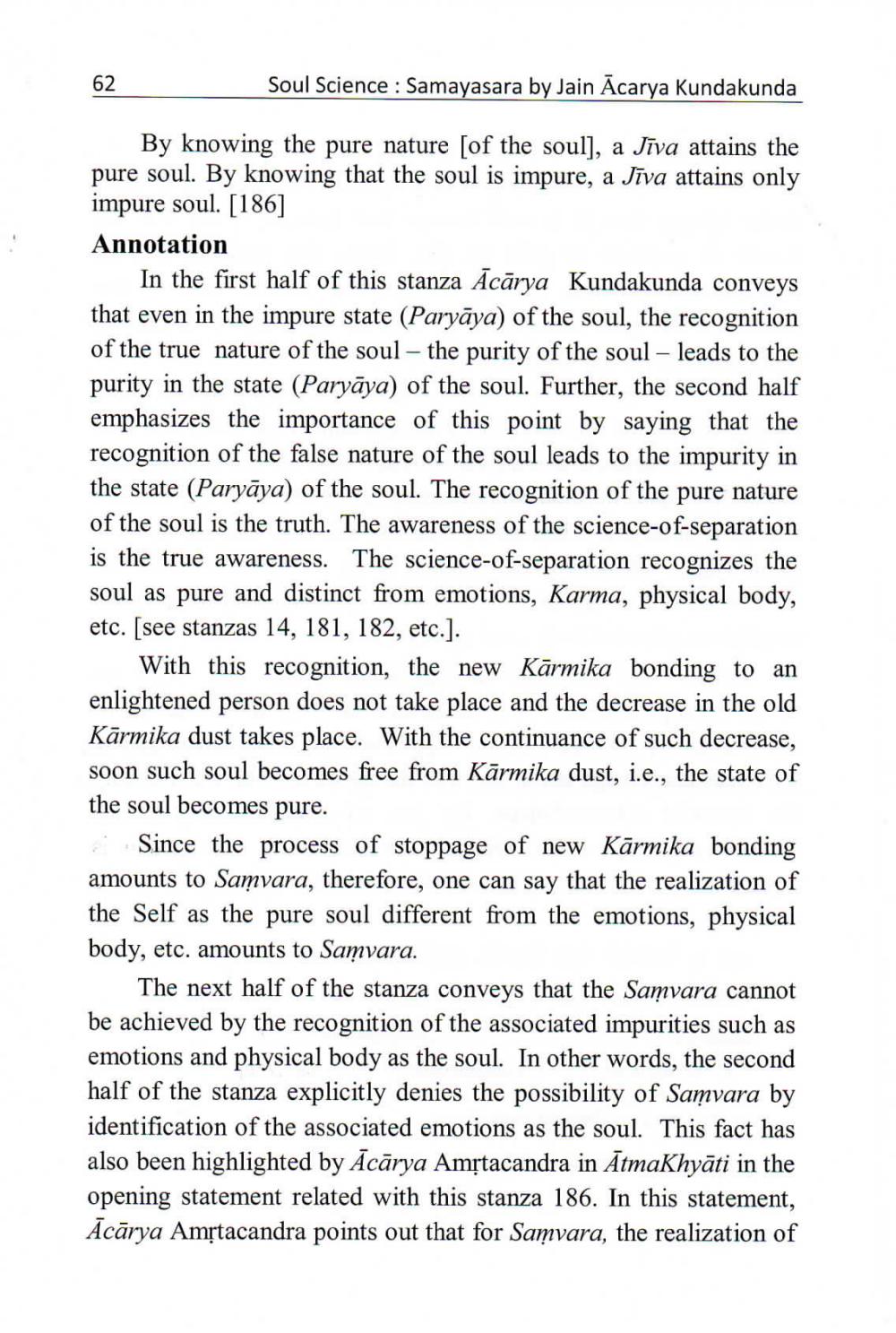________________
Soul Science: Samayasara by Jain Acarya Kundakunda
By knowing the pure nature [of the soul], a Jīva attains the pure soul. By knowing that the soul is impure, a Jīva attains only impure soul. [186]
62
Annotation
In the first half of this stanza Acārya Kundakunda conveys that even in the impure state (Paryaya) of the soul, the recognition of the true nature of the soul - the purity of the soul - leads to the purity in the state (Paryaya) of the soul. Further, the second half emphasizes the importance of this point by saying that the recognition of the false nature of the soul leads to the impurity in the state (Paryaya) of the soul. The recognition of the pure nature of the soul is the truth. The awareness of the science-of-separation is the true awareness. The science-of-separation recognizes the soul as pure and distinct from emotions, Karma, physical body, etc. [see stanzas 14, 181, 182, etc.].
With this recognition, the new Karmika bonding to an enlightened person does not take place and the decrease in the old Kärmika dust takes place. With the continuance of such decrease, soon such soul becomes free from Kärmika dust, i.e., the state of the soul becomes pure.
Since the process of stoppage of new Karmika bonding amounts to Samvara, therefore, one can say that the realization of the Self as the pure soul different from the emotions, physical body, etc. amounts to Samvara.
The next half of the stanza conveys that the Samvara cannot be achieved by the recognition of the associated impurities such as emotions and physical body as the soul. In other words, the second half of the stanza explicitly denies the possibility of Samvara by identification of the associated emotions as the soul. This fact has also been highlighted by Ācārya Amṛtacandra in Ātmakhyāti in the opening statement related with this stanza 186. In this statement, Acārya Amṛtacandra points out that for Samvara, the realization of




